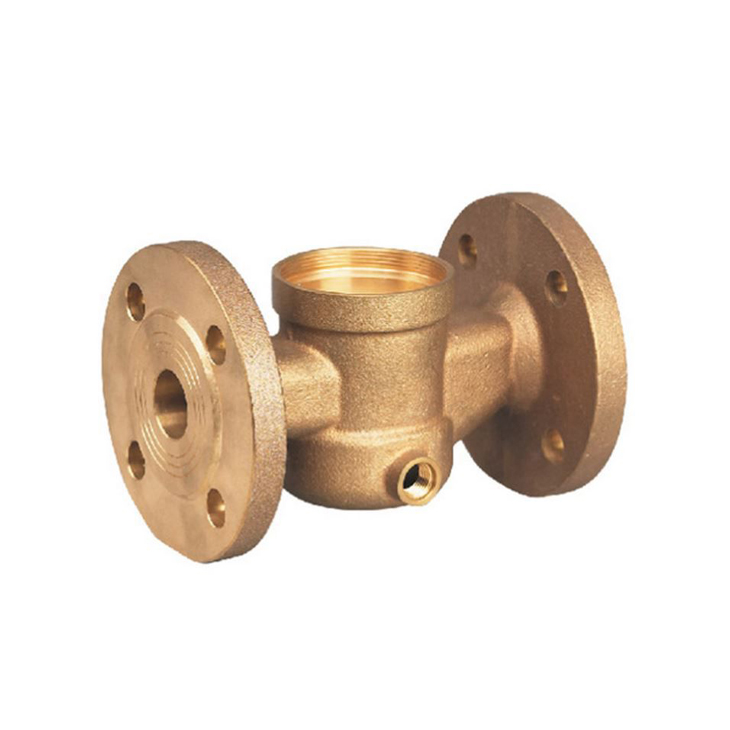The press fit bronze flange adapter is made from bronze, a material known for its resistance to corrosion, particularly in applications involving water, chemicals, and marine environments. Its ability to resist wear and tear under harsh conditions makes it a popular choice for industries such as plumbing, oil and gas, and marine engineering.

Material Variations in Press Fit Bronze Flange Adapters
The key difference in the technology behind press fit bronze flange adapters is the material used in their construction. While bronze is the primary material, there are various alloys of bronze that are suited for different applications. These include:
Tin Bronze: This is the common type of bronze used in press fit bronze flange adapters. It is made by alloying copper with tin and offers corrosion resistance, particularly in environments with exposure to water and chemicals.
Aluminum Bronze: This type of bronze is alloyed with aluminum and is ideal for high-strength applications, especially in environments where resistance to seawater is necessary. Aluminum bronze offers mechanical properties, making it suitable for more demanding conditions.
Phosphor Bronze: Phosphor bronze is another variation used in press fit bronze flange adapters. It is made by adding phosphorus to the alloy and is known for its wear resistance and fatigue strength. This material is often used in applications that involve high mechanical stress.
The choice of bronze alloy affects the overall performance, durability, and cost of the press fit bronze flange adapter. Engineers must carefully consider the material's properties to ensure it meets the specific demands of the application.
Manufacturing Methods: Casting vs. Machining
The technology used in manufacturing press fit bronze flange adapters has evolved significantly over the years. Traditionally, these adapters were cast in molds, a process that involved pouring molten bronze into a pre-designed mold to form the adapter. Casting is still commonly used today for producing large quantities of adapters, as it is cost-effective and allows for complex shapes to be created.
However, more advanced press fit bronze flange adapters are now often produced using machining techniques. In this process, solid bronze billets are used to create the flange adapters through CNC (Computer Numerical Control) machining. This method offers higher precision and allows for tighter tolerances, making it ideal for applications where exact dimensions are critical.
One of the technological differences between cast and machined press fit bronze flange adapters lies in their surface finish. Cast adapters typically have a rougher surface texture due to the mold, whereas machined adapters have smoother surfaces, which can help improve sealing and reduce the risk of leaks in high-pressure systems.
Press Fit Design Variations
The design of the press-fit mechanism itself has undergone several advancements, allowing for better performance in various applications. Traditionally, press fit bronze flange adapters relied on a simple interference fit, where the adapter was pressed into the pipe or fitting and held in place by friction.
Recent advancements in the design of these adapters have introduced additional features, such as:
Dual-Ring Design: Some press fit bronze flange adapters are now designed with dual-ring systems to improve sealing capabilities. The inner and outer rings ensure a more secure fit, especially in applications involving high pressure or vibration.
Elastic Press Fit: Elastic press-fit adapters use spring-loaded or elastomeric seals that provide better resistance to pressure changes and thermal expansion. These systems help maintain a strong, leak-proof seal even in dynamic conditions.
Serrated Flange: The introduction of serrated flanges helps to enhance the grip between the adapter and the mating surface. These adapters are particularly useful in systems that experience vibrations or frequent movement, as the serrated edges prevent slippage or loosening over time.
The evolution of press-fit designs ensures that the press fit bronze flange adapter can perform reliably in a wide variety of conditions, from low-pressure plumbing systems to high-performance industrial applications.
 +86-576-82686004
+86-576-82686004
 allen@badavalve.com / daisy@badavalve.com
allen@badavalve.com / daisy@badavalve.com





 EN
EN
 Español
Español










